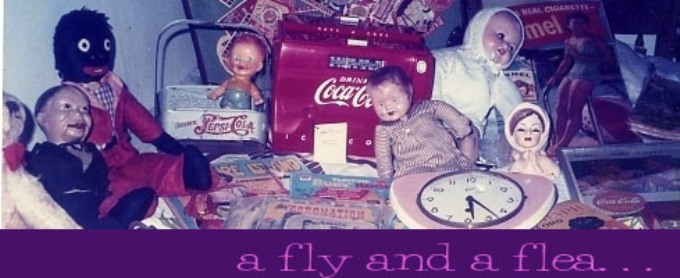The first vintage items I collected were cobalt blue bottles, because not only were they cheap (Milk of Magnolia bottles cost Php40 for a set of 3 in the '80s) but their intense blue coloring had lots of visual appeal. They were colored like so because they held contents (oils, poisons, medicines) that were sensitive and could be rendered ineffective when exposed to light.
Recently, a cache of old cobalt blue bottles surfaced in Manila and found their way in antique shops and online stores. These Polak and Schwarz's cobalt blue bottles were made to contain oil essences for the Philippine market.
Founded in 1889 by Leopold Schwarz. and his brother in law, Joseph Polak, the company produced-Fruit Flavors, Gift Free Dyes and Aether Oils. The factory moved in 1896 to Zaandam under the name NV Polak & Schwarz's Essence Factories.
In 1930 the essence factory of Polak and Schwarz was build on the Provinciale weg in Zaanstad and became the most important essence producer in Europe before the second World War. After the war the company moved to Hilversum and then merged with an American company to become International Flavors and Fagrances (IFF).
My 10 inch tall example still has its original paper label intact. I have seen unopened bottles stoppered with cork holding their original content. There are other bigger bottles of amber color from the same firm, containing spirits and gin. Cobalt blue bottles are among the most desirable and most expensive in the bottle collecting world, so the prices of these bottles are expected to rise as the stocks dwindle.
Wednesday, July 24, 2013
Sunday, July 7, 2013
267. A Grate Collectible: ANTIQUE KUDKURAN
Now here's a fanciful kitchen collectible that I chanced upon at the famed Chatuchak Market in Bangkok. It's an old coconut grater carved in the shape of a man on all fours. The metal grater itself protrudes from the man's mouth. Coconut graters are found all over Asia, as the coconut was a staple food in this region. To remove the flesh off the shells, a half-coconut was scraped against a sharp-edged metal spur, while seated on the kudkuran's body.
Most Philippine kudkurans had a basic shape--just a paddle shaped seat to sit on with a metal grater screwed or nailed in the narrow portion of the seat. Others took on more figurative shapes--graters fashioned from tree stumps often took the form of 4-legged animals, like a horse. This example. made of heavy wood, is a more creative example--the crouching man even grasps a ball on one hand--playing while he works!
With the advent of motorized graters, the folksy kudkuran had all but disappeared in Philippine kitchens. I know a friend who collects them and displays them as sculptural pieces--and that s exactly how I will display my antique kudkuran.
Most Philippine kudkurans had a basic shape--just a paddle shaped seat to sit on with a metal grater screwed or nailed in the narrow portion of the seat. Others took on more figurative shapes--graters fashioned from tree stumps often took the form of 4-legged animals, like a horse. This example. made of heavy wood, is a more creative example--the crouching man even grasps a ball on one hand--playing while he works!
With the advent of motorized graters, the folksy kudkuran had all but disappeared in Philippine kitchens. I know a friend who collects them and displays them as sculptural pieces--and that s exactly how I will display my antique kudkuran.
Labels:
1920s,
collectible,
flea market,
folk art,
houseware,
Thailand
Subscribe to:
Posts (Atom)










